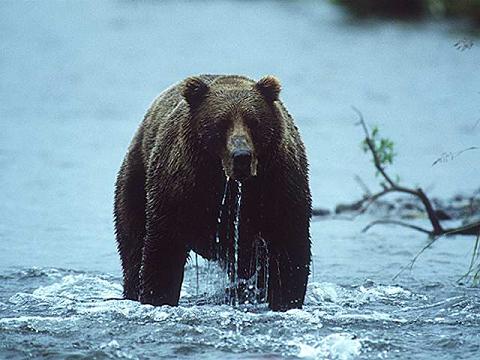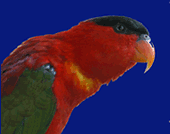
 |
|
|
|---|
Animals live in many kinds of places. The place where an animal lives is called its habitat. Each type of habitat presents a special challenge to animals. For example, animals that live in polar regions must withstand bitter cold. Those that inhabit the tropics face extreme heat. In spite of these challenges, animals can be found everywhere on Earth. They live on the highest mountains and in the deepest oceans. They roam the driest deserts and the wettest rain forests. They swim in fresh water and salt water.
Each habitat supports many kinds of animals. In most cases, the animals are the same kinds that have lived in those surroundings for thousands of years. As a result, the animals have developed bodies and ways of life that suit them to that particular habitat. No single species of animal can survive everywhere. For example, tropical fish from the Amazon River thrive in warm water but cannot withstand the cold streams of the Andes Mountains. On the other hand, many kinds of fish that live in the Arctic Ocean would die if they were exposed to the warm waters of the Caribbean Sea. However, some animals may travel between habitats from time to time. For example, African elephants eat both grass and tree parts and so move between grassland and forest. But these animals would not be able to withstand the freezing temperatures of the polar regions.
Some habitats, including many forests and grasslands, are being destroyed by human beings. The destruction of these habitats usually causes the death of many animals. When people convert grassland to farmland, for example, they destroy the homes and source of food of many species. Without these necessities, some animals will die immediately. Others may try moving to another grassland. But the new area may not have enough food and shelter to support the additional wildlife. As a result, many more animals will die.
Some of the major animals, grouped according to seven types of habitats: (1) mountains, (2) grasslands, (3) temperate forests, (4) tropical forests, (5) deserts, (6) polar regions, and (7) oceans.
Animals of the mountains
Mountains support a variety of animal life. The numbers and kinds of animals found on mountains vary with altitude. More animals and more kinds of animals live at lower altitudes than at higher ones, largely because of the differences in climate between elevations. Generally, mountain climates become colder, wetter, and windier with increasing altitude. The air also gets thinner and has less oxygen. In addition, fewer plants are found at higher elevations, and therefore less food is available for animals.

Bears, deer, elk, and mink make their homes on the forested lower slopes and in the wooded or grassy valleys of mountains. Rainbow trout and graylings swim in mountain streams. Many mountains have meadows of grasses and herbs. These meadows are home to chinchillas, ibexes, llamas, vicunas, and yaks. Butterflies, grasshoppers, and spiders also live there.
Above the timber line-that is, the line beyond which trees will not grow because of the cold-stand rocky cliffs and peaks dotted with shrubs, mosses, and other plants. Small meadows are also found there. Sure-footed bighorn sheep and mountain goats dwell among the windswept rocks, as do furry marmots and pikas. High on the snow-capped peaks, only a few insects, spiders, and ice worms can survive. Golden eagles and some other birds fly above the mountains. A large African vulture, Ruppell's griffon, has been known to soar as high as 36,600 feet (11,150 meters).
Animals of the grasslands
Grasslands include the prairies of North America, the pampas of South America, the plains of Europe, and the steppes of Asia. The savannas of east Africa have more grassland animals than any other area.
Rainfall in grasslands is seasonal, and animals sometimes travel great distances to find green grass. Gazelles, gnus, and zebras migrate by the thousands through the African savannas. Smaller groups of elephants and rhinoceroses also feed on the grasses there. Such meat-eating mammals as cheetahs, hyenas, and lions roam the savannas in search of prey. The savannas are also home to giraffes, jackals, ostriches, secretary birds, and termites. In addition, hippopotamuses live in and near bodies of water in African grasslands. Animals of other grasslands include the kangaroos and wombats of Australia, the cavies and rheas of South America, and the coyotes and prairie dogs of North America.

Many animals of the grasslands have become endangered due to loss of their habitat and to overhunting. The rich soils of grasslands are ideal for farming, and people have converted many such areas to farmland. Many of the large grassland animals are favorite big game for hunters. For example, the once-plentiful pampas deer of South America have become extremely rare. As the pampas are converted to farmland, the tall grass that grows there disappears. Without this grass, the pampas deer have no shelter and become easy prey. Bison once grazed in huge herds in the Great Plains of North America. But so many of these animals were killed by hunters or died as their grassland habitat was converted to farmland that they were nearly wiped out.
Animals of the temperate forests
Temperate forests consist largely of deciduous trees and evergreen trees. Deciduous trees shed their leaves in the fall and grow new ones in the spring. Evergreen trees have leaves that live two or more years. Some evergreens have needle-shaped leaves. Most temperate forests are in Asia, Europe, and North America. Australia also has some temperate forests.

Many forest animals have small bodies that allow them to move easily through the underbrush. Forest mammals include chipmunks, mice, opossums, porcupines, raccoons, skunks, and squirrels. Bears, deer, and wild boars also live in temperate forests. Bobcats and wolves were once common in woodland areas. However, so many of these predators have been hunted and trapped through the years that they have become rare.
Salamanders are often plentiful in temperate forests. They hide in the leaf litter or under rocks, where they feed on insects and other small organisms. In wet forests, slugs and other snails are common. Beavers, fish, frogs, muskrats, otters, salamanders, and turtles live in or near woodland streams, ponds, and lakes. Great numbers of birds nest in the trees and shrubs.
Many temperate forests have been cleared for farms and cities, and many others have been cut down for fuel and lumber. This deforestation (destruction of forests) places woodland animals in danger. Extensive logging in the Pacific Northwest of the United States, for example, has destroyed much of the habitat of the spotted owl, threatening the existence of that species.
Animals of the tropical forests
Tropical forests stay warm all year and receive plentiful rainfall. These forests are found in Africa, Asia, Australia, Central and South America, and the Pacific Islands. More kinds of animals live in tropical forests than in any other habitat. Scientists estimate that perhaps as many as 30 million species of tropical animals have not even been discovered yet.
Insects make up the largest single group of animals that live in tropical forests. They include brightly colored butterflies, huge colonies of ants, mosquitoes, and camouflaged stick insects. Spiders are also plentiful.
Many tropical birds, such as quetzals and parrots, are spectacularly colored. The broad leaves of trees in tropical forests form a thick overhead covering called a canopy that blocks nearly all sunlight from reaching the forest floor.

Many kinds of animals live in the canopies of tropical forests. They include harpy eagles and toucans; tree frogs; flying dragons; spider monkeys and howlers; gibbons and orangutans; sloths; slow lorises; tree boa constrictors; bats; and wasps, beetles, and leaf-cutting ants.
Jaguars, tapirs, and bushmaster snakes live on the ground in tropical forests. Chimpanzees and lowland gorillas alternate between the ground and the trees. Crocodiles, fish, and turtles inhabit rivers and ponds.
|
|---|
|
||||||||||||
|---|---|---|---|---|---|---|---|---|---|---|---|---|
|
|
||||||||||||